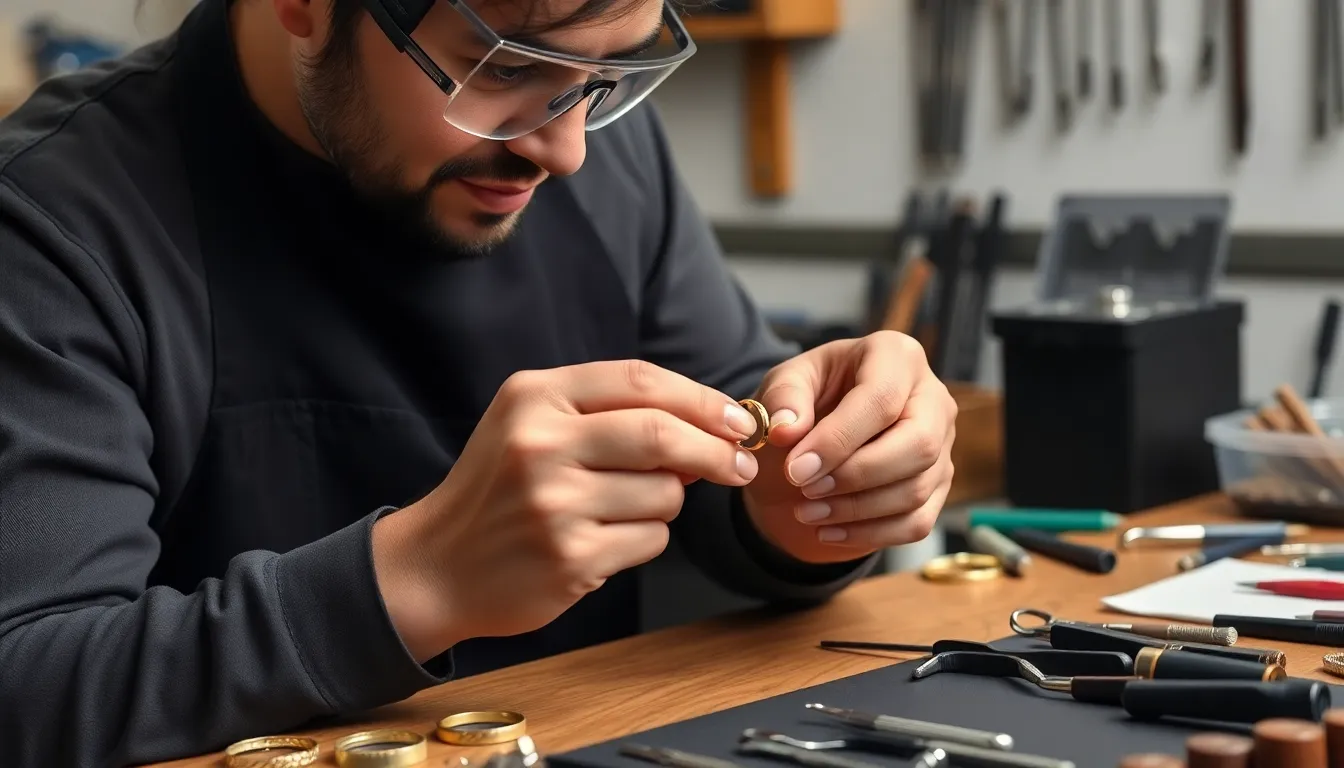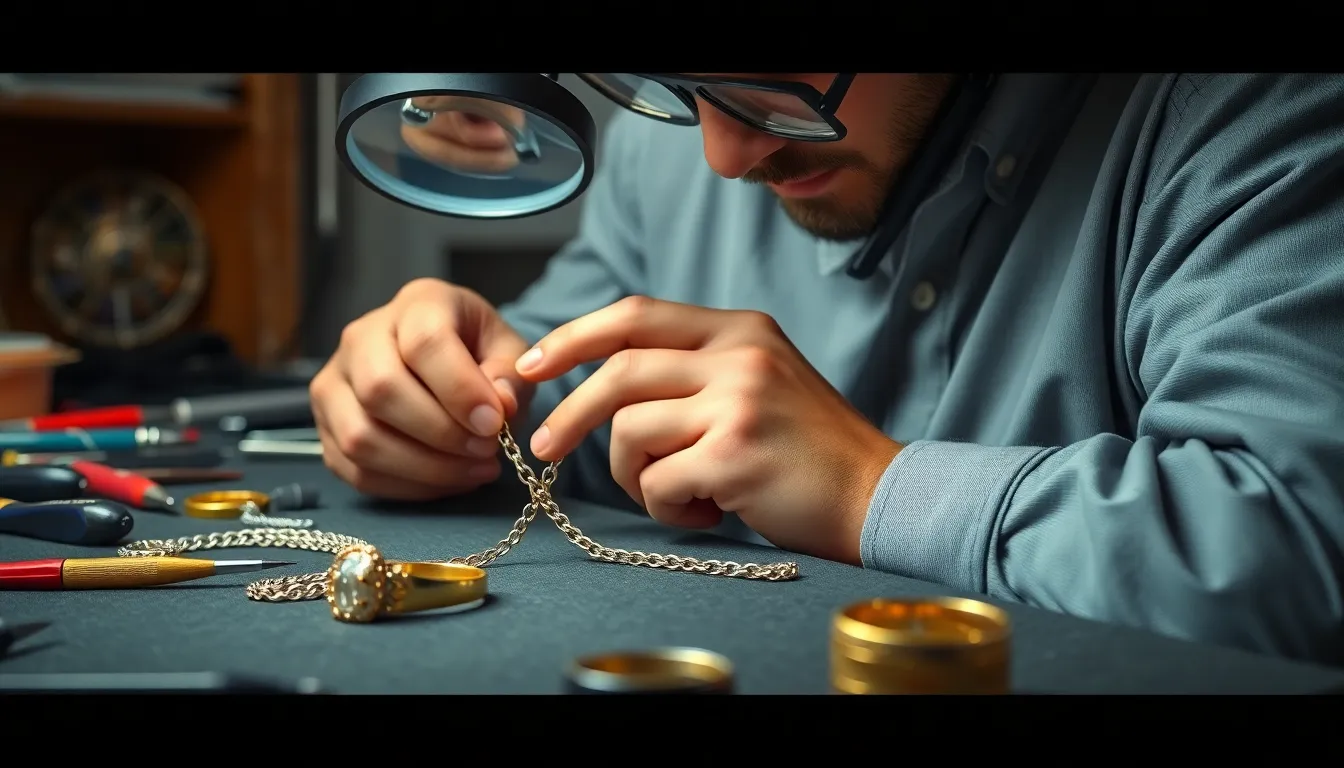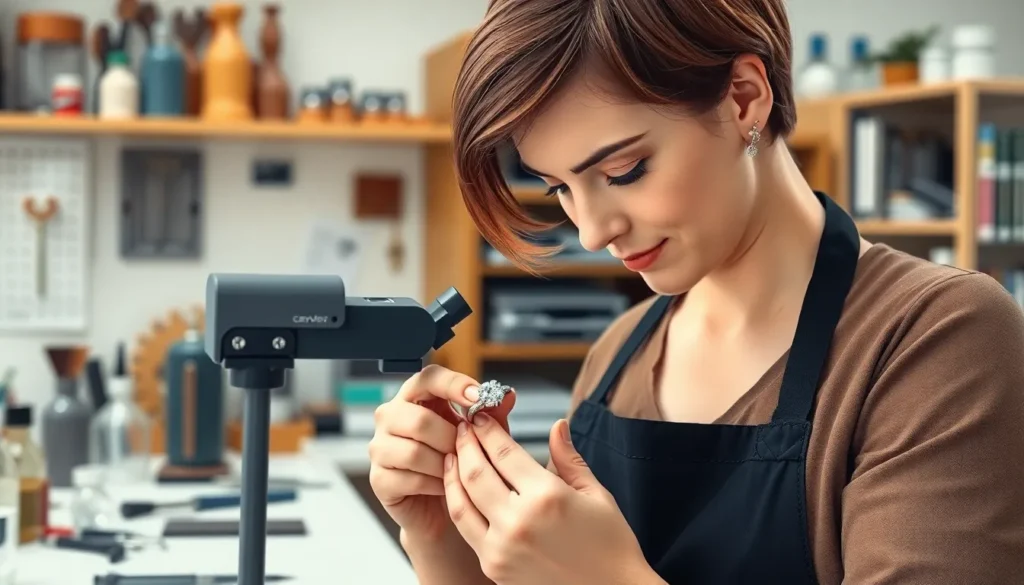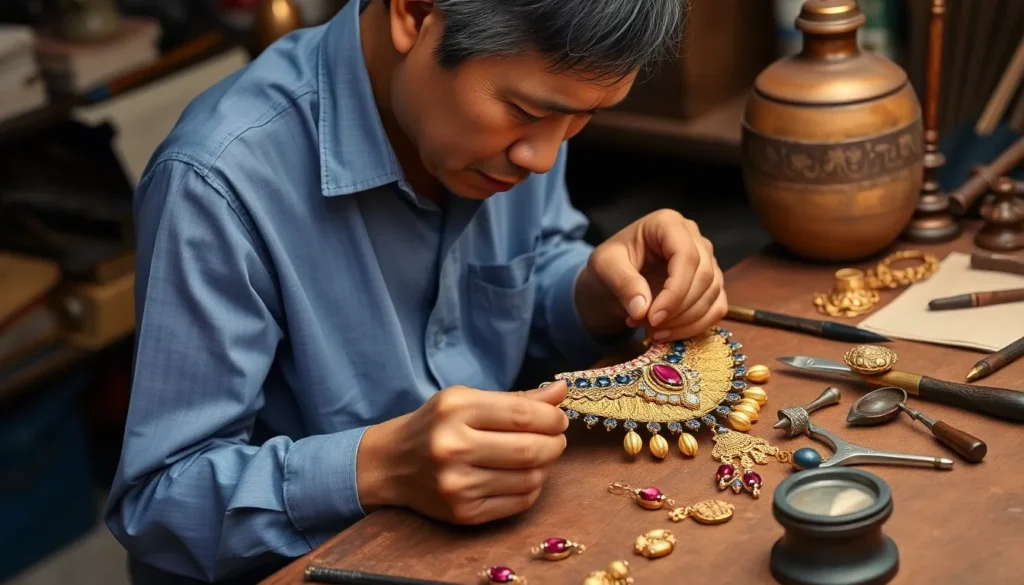When that beloved piece of fine jewelry starts to show signs of wear and tear, it can feel like losing a part of your soul. Whether it’s a missing diamond or a bent band, the heartbreak is real. But fear not! Fine jewelry repair isn’t just a necessity; it’s a chance to breathe new life into your treasures and keep those sentimental stories sparkling bright.
Fine Jewelry Repair
Fine jewelry repair plays a significant role in maintaining the beauty and integrity of sentimental pieces. Every repair provides an opportunity to restore charm and ensure lasting value.Importance of Fine Jewelry Repair
Preservation holds great importance for jewelry that carries personal stories. Repairing damaged items safeguards their emotional and financial worth. Regular maintenance enhances their longevity, ensuring these pieces can remain in families for generations. Skilled repair services address issues that may compromise structural integrity and aesthetic appeal, reinforcing why timely intervention is crucial.Common Issues Requiring Repair
Several common issues can necessitate fine jewelry repair. Worn-out prongs, for instance, can lead to lost gemstones if not addressed promptly. Broken clasps often compromise security, risking valuable items. Additionally, scratches and dents affect the jewelry’s appearance, requiring polishing or refinishing. Loose stones pose another concern, as movement can result in further damage. Addressing these issues promptly ensures the jewelry retains its shine and function.Types of Fine Jewelry Repairs

Ring Resizing
Ring resizing adjusts the size of a ring to fit a finger comfortably. Jewelers can either increase or decrease the size, depending on the customer’s needs. An increase involves adding metal and reshaping the band, while a decrease entails removing a portion of the band. Signs that resizing may be necessary include discomfort when wearing a ring or changes in finger size due to weight fluctuations. Proper sizing maintains both the comfort and security of the ring, reducing the risk of loss.Stone Replacement
Stone replacement addresses missing or damaged gemstones, restoring the piece’s beauty. Jewelers carefully select replacement stones that match the original in size, shape, and quality. Customers often choose to upgrade to a higher-quality stone during this process. It’s crucial to act swiftly when a stone is loose or missing to prevent further damage to the setting. Timely replacement enhances the jewelry’s overall appearance and preserves its sentimental value.Chain Repair
Chain repair fixes broken links or clasps in necklaces and bracelets. Jewelers can solder broken parts, ensuring a secure connection. Different types of chains require specific techniques, which skilled jewelers know well. Common signs of wear include fraying or broken links, often caused by regular use or snagging. Addressing chain issues promptly extends the life of the jewelry and maintains its functionality, ensuring pieces remain safe to wear.Choosing a Jewelry Repair Service
Selecting the right jewelry repair service requires careful consideration to ensure quality and trust. Potential customers should assess several factors before making a decision.Factors to Consider
Experience plays a crucial role in jewelry repair. Look for a service with a proven track record in repairing fine jewelry. Certifications can confirm a repair technician’s expertise. Recommendations from friends or family enhance credibility. Additionally, the range of services offered matters since some jewelers specialize in specific repairs, while others are more versatile. Location influences ease of access for consultations and pickups. Finally, warranty policies reflect the repair service’s confidence in their work, offering extra peace of mind.Questions to Ask
Inquiring about the repair process is essential. Ask the technician how repairs are performed and the estimated time frame for completion. Understanding costs prior to starting any work is wise. Customers should also confirm if they provide appraisals. It’s important to know how they handle customer concerns or complaints. Lastly, asking about previous projects gives insight into the quality of their work.DIY Fine Jewelry Repair
Embarking on DIY fine jewelry repair offers a chance to restore cherished items, but it requires caution and skill. Understanding the risks and limitations involved is essential for success.Risks and Limitations
Engaging in DIY repairs carries certain risks. Damaging precious materials, such as gold and gemstones, can lead to further expenses or loss of value. Lack of experience may result in improper handling of tools, which could exacerbate existing issues. Additionally, repairing intricate pieces like necklaces or bracelets often requires specialized knowledge. Limited tools might restrict one’s ability to complete the repair effectively; incomplete fixes can leave jewelry vulnerable to future damage. It’s crucial for individuals to assess their skill level and the complexity of the repair before deciding to proceed on their own.Basic Tools and Techniques
Using the right tools makes a significant difference in DIY fine jewelry repair. A basic toolkit should include pliers, wire cutters, tweezers, and a small file. Adopting straightforward techniques, like tightening loose screws or re-stringing beads, can often be managed. Some repairs, such as replacing a broken chain link, require precision and patience; tackling these projects methodically increases the chances of success. Researching specific repair tutorials provides valuable insights and enhances techniques. Cultivating skills over time leads to greater confidence when handling fine jewelry repairs.Conclusion
Fine jewelry repair is vital for preserving the beauty and emotional significance of cherished pieces. It not only restores functionality but also enhances the overall appearance, ensuring these treasures can be passed down through generations. By addressing common issues promptly and choosing a reputable repair service, owners can maintain both the aesthetic and sentimental value of their jewelry. For those considering DIY repairs, it’s essential to weigh the benefits against the risks involved. With careful assessment and proper techniques, individuals can successfully rejuvenate their jewelry. Ultimately, whether opting for professional help or tackling repairs at home, the goal remains the same: to keep beloved pieces shining bright for years to come.
For those considering DIY repairs, it’s essential to weigh the benefits against the risks involved. With careful assessment and proper techniques, individuals can successfully rejuvenate their jewelry. Ultimately, whether opting for professional help or tackling repairs at home, the goal remains the same: to keep beloved pieces shining bright for years to come.



